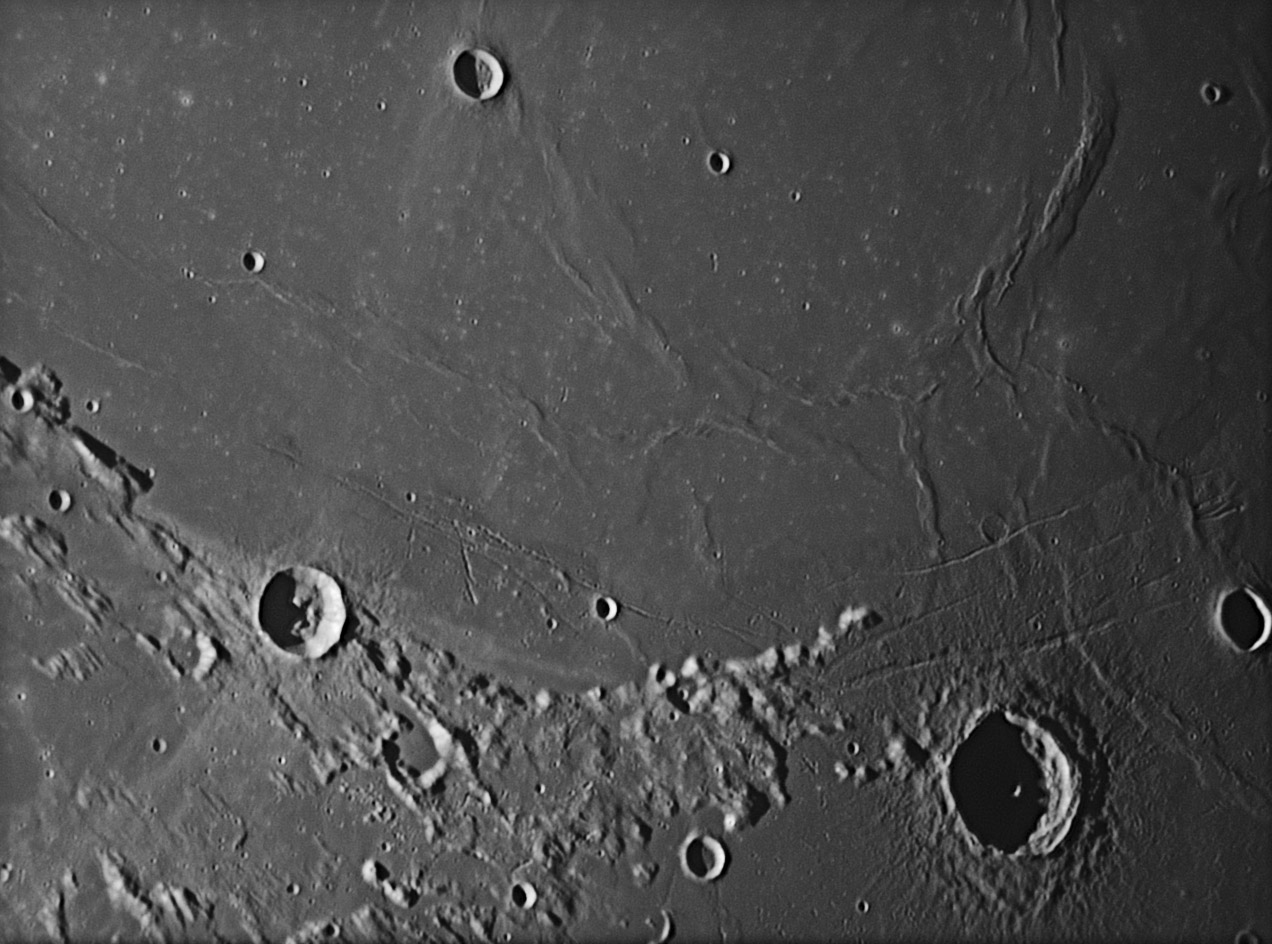June 6, 2021
Less of a Mystery?
Originally published October 18, 2011

image by Bart Declercq
A few days ago LPOD featured a relatively high Sun view of a suspiciously circular feature (SCF) in southern Mare Serenitatis.
The question was if the feature (in the center of this image) was a buried impact crater. Bart and a few others have sent images
with better illumination. Here is what Bart says: As far as I can tell from my images, part of the "rim" of this ghost crater seems
to be formed by a coincidental string of small impact craters, two other parts by ripples in the mare lava. The central "peak" is
just a flat white spot (perhaps a couple of craters too small to resolve individually and young enough to have bright ejecta blankets.
In all, it's probably more a testament to the human ability to see patterns everywhere than a real ghost crater (a pity, would have
been quite cool to find such a large unknown feature on the Moon!) That is the most likely explanation but not the most satisfying.
The SCF does break the trend of the shore-following mare ridges, which is consistent with a crater having deformed the direction
of the later-formed ridges. LRO's Quick Map shows a small shadow casting feature at the SCF's center which could be a hill that
is the unburied top of a central peak. (Or maybe not, there is no NAC image of that area). Finally, there does seem to be a hint of
a curved ridge on the west (left) side that completes the rim, and is not part of the main mare ridges. I think Bart's interpretation is
probably right, but it would be more interesting if it isn't.
Chuck Wood
Technical Details
30cm Orion Optics Newtonian telescope and Basler Ace a1300 camera (1296x966 resolution) and an Astronomik Red filter - image
scale is about 0.15"/pixel.
Related Links
Rükl plate 24
Yesterday's LPOD: FFC
Tomorrow's LPOD: Little Yellow Lines
COMMENTS?
Register, Log in, and join in the comments.



